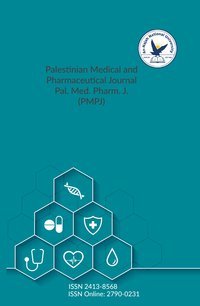Prevalence of uncontrolled hypertension in hemodialysis patients: A cross-sectional study from Palestine
Authors:
Article info
2022-06-09
2022-08-22
123 - 132
Keywords
- Palestine
- Hemodialysis
- Hypertension
Abstract
Background: Hypertension (NTN) is very common among the hemodialysis (HD) population, and controlling high blood pressure (BP) is essential to decrease the risk of cardiovascular diseases and mortality in HD patients. This study aimed to assess the prevalence of hypertension among HD patients, the percentage of patients who reached predialysis and post-dialysis recommended goals of BP, and to find any possible association between controlled HTN and some socio-demographic and clinical factors. Method: The study was a cross-sectional observational at three hemodialysis units in the south of Palestine. The minimum calculated sample size was 308, so all adult hemodialysis patients who met the inclusion criteria in the selected units were included. Controlled NTN was defined as predialysis BP of ˂140/90 mmHg and post-dialysis BP of ˂130/80 mmHg according to KDOQI Clinical Practice Guidelines Results: A total of 390 patients participated in the study; 203 males (52.1%), mean age ±SD was 52.4±16.2, diabetes mellitus (DM) was the leading cause of ESRD (43.3%) followed by uncontrolled HTN (29.2%). The average duration of hemodialysis therapy ±SD was 37.47±37.57 months. Of the 390 patients, 356 (91.3%) had HTN, and 231 (64.9%) patients with HTN did not achieve the predialysis and post-dialysis BP target goals of less than 140/90 and 130/80, respectively. There was a significant association between control of BP and gender only, as 59.2% of patients who achieved the target BP goals were female (p-value = 0.002). Patients have prescribed 2875 medication orders of 53 different medications with a mean of 7.37±2.38; calcium carbonate was the most frequently prescribed medication (67.4%), followed by amlodipine (64.6%) and aspirin (56.7%). Amlodipine was the most prescribed antihypertensive medication. Conclusion: The study showed a very high rate of HTN among HD patients. The control of BP was inferior as the majority of patients did not achieve the target blood pressure goals. It is recommended to individualize HD session duration and frequency to meet patients' needs, in addition to counseling patients about the appropriate non-pharmacological interventions such as sodium restriction and being adherent to antihypertensive medication dose and timing.
Prevalence of uncontrolled hypertension in hemodialysis patients: A cross-sectional study from Palestine
المؤلفون:
معلومات المقال
2022-06-09
2022-08-22
123 - 132
الكلمات الإفتتاحية
- Palestine
- Hemodialysis
- Hypertension
الملخص
Background: Hypertension (NTN) is very common among the hemodialysis (HD) population, and controlling high blood pressure (BP) is essential to decrease the risk of cardiovascular diseases and mortality in HD patients. This study aimed to assess the prevalence of hypertension among HD patients, the percentage of patients who reached predialysis and post-dialysis recommended goals of BP, and to find any possible association between controlled HTN and some socio-demographic and clinical factors. Method: The study was a cross-sectional observational at three hemodialysis units in the south of Palestine. The minimum calculated sample size was 308, so all adult hemodialysis patients who met the inclusion criteria in the selected units were included. Controlled NTN was defined as predialysis BP of ˂140/90 mmHg and post-dialysis BP of ˂130/80 mmHg according to KDOQI Clinical Practice Guidelines Results: A total of 390 patients participated in the study; 203 males (52.1%), mean age ±SD was 52.4±16.2, diabetes mellitus (DM) was the leading cause of ESRD (43.3%) followed by uncontrolled HTN (29.2%). The average duration of hemodialysis therapy ±SD was 37.47±37.57 months. Of the 390 patients, 356 (91.3%) had HTN, and 231 (64.9%) patients with HTN did not achieve the predialysis and post-dialysis BP target goals of less than 140/90 and 130/80, respectively. There was a significant association between control of BP and gender only, as 59.2% of patients who achieved the target BP goals were female (p-value = 0.002). Patients have prescribed 2875 medication orders of 53 different medications with a mean of 7.37±2.38; calcium carbonate was the most frequently prescribed medication (67.4%), followed by amlodipine (64.6%) and aspirin (56.7%). Amlodipine was the most prescribed antihypertensive medication. Conclusion: The study showed a very high rate of HTN among HD patients. The control of BP was inferior as the majority of patients did not achieve the target blood pressure goals. It is recommended to individualize HD session duration and frequency to meet patients' needs, in addition to counseling patients about the appropriate non-pharmacological interventions such as sodium restriction and being adherent to antihypertensive medication dose and timing.
An-Najah National University
Nablus, Palestine
Nablus, Palestine
- P.O. Box
- 7, 707
- Fax
- (970)(9)2345982
- Tel.
- (970)(9)2345560
- (970)(9)2345113/5/6/7-Ext. 2628
- [email protected]
- EIC
- Prof. Ismail Warad
